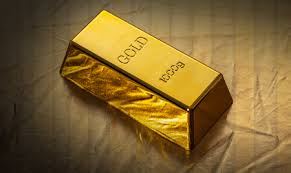Precious metals experienced a significant drop today, with gold down by 1.2% and silver decreasing by 2%. This decline occurred due to a strengthening US dollar and hawkish remarks from Federal Reserve officials. Additionally, the Reserve Bank of New Zealand indicated possible rate hikes, and inflation in the UK exceeded expectations. These factors contributed to profit-taking after gold reached a record high earlier this week. Although silver also fell after a major breakout above $30, analysts suggest it could still rally. Regarding gold, further evidence is required to confirm a peak, as the recent decline may simply be short-term profit-taking. Overall, the gold price outlook remains positive, with the potential to reach $2,500.
Gold Price Outlook: Support on Dips Expected
This year, several factors have supported gold and silver prices, including a weaker dollar last week, which provided a significant boost. Since the non-farm jobs report in April, the US economy has shown signs of slowing, with key economic indicators underperforming expectations. Today’s reports on weaker home sales and increased crude oil inventories underscore this trend. Other weak data, such as retail sales, building permits, and housing starts, reflect a slowing economic recovery.
If economic weakness continues, it could lead to lower inflation and ease pressure on the Federal Reserve to maintain tight monetary policies. Additionally, the Fed’s decision to shrink its balance sheet has weakened the dollar, and optimism around China’s economy has helped support gold prices. The major drivers of gold’s growth this year are demand for inflation protection and increased central bank purchases, keeping the long-term outlook favorable.
Hawkish Fed Comments Keep Dollar Bears in Check
Although the US dollar rebounded this week, it remains lower than its April highs. As the US economy slows, the positive sentiment towards the dollar is fading, despite earlier gains this year. If weak data continues to emerge, inflation could decrease, reducing the need for strict monetary policies. This would make it harder for the Federal Reserve to justify maintaining high interest rates.
Attention now shifts to the minutes of the recent FOMC meeting, which will shed light on the Fed’s stance on inflation. While Fed Chair Powell has indicated that another rate hike is unlikely, the minutes will offer more insight into their approach to inflation risks. Several Federal Reserve officials have emphasized that interest rates must remain high to control inflation.
Gold Outlook: Technical Indicators and Key Levels

Today’s decline in gold prices suggests a potential reversal against April’s high of $2,431, as gold failed to close above this level twice. Despite this, the broader trend remains strong, and more evidence is needed before turning bearish. Gold is currently testing a key support zone around $2,385, where prior resistance and a short-term bullish trend intersect. Should gold find support here, a rise in prices is likely. However, if prices drop below $2,332, a bearish trend may begin. The current market environment suggests that gold’s easiest path is upward, and reaching $2,500 remains a viable target.
Conclusion
In summary, while precious metals have seen a temporary decline, the gold outlook remains positive due to ongoing inflation concerns and central bank demand. Gold and silver prices may continue to find support on dips, and technical indicators suggest the possibility of further gains. Keep an eye on economic data and the FOMC minutes for further insights into gold’s future direction.
For more in-depth analysis and real-time signals, visit Daily Gold Signal.





